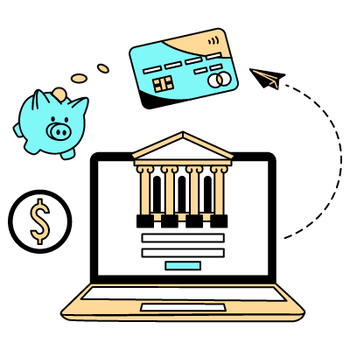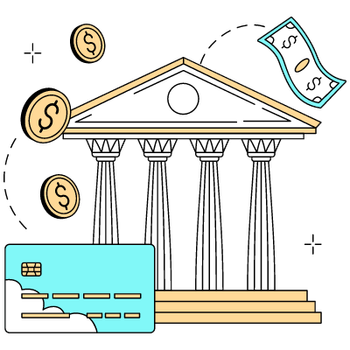
International money orders are a way to send money to someone in another country.
You buy a money order at a post office or bank, pay a fee, and send it to the recipient. The recipient can then cash it or deposit it into their account.
It's a great and secure alternative when wire transfers or online providers are not available.
Here we'll look at what money order is, how it works, and when you should use it. We'll also explain the costs, safety, and speed and answer all pressing questions.
Mehdi Punjwani Artiom Pucinskij Fact Checker Elliot Laybourne August 16th, 2024 Disclosure On this page What is an international money order? Who offers international money orders? Buying international money orders Sending international postal orders Cashing an international money order The cost of international money orders International money order transfer limits The speed of money orders Benefits and drawbacks of using money orders Best alternatives for international money orders A bit more on money orders Let's recap: What are money orders? Resources & further readingAn international money order is a document that works as a safe and secure way of sending small amounts of money overseas. Fun fact, money orders were established in the UK in 1972 and were known as postal orders.
How do international money orders work?International money orders work similarly to checks, but you won’t need a bank account to receive the money. The sender pre-pays an amount and the document is sent to the recipient, who can exchange it for cash or deposit it to their bank account.



Online services such as Western Union or MoneyGram also offer the option to send international money orders.
You should be able to purchase an international money order from your local postal service, a range of banking institutions, and some money transfer providers.
If you’re in the US you should be able to purchase an international money order from the USPS to a range of countries. Your transfer limit is generally around $700, but it will depend on where and how you send the money. However in the US, you won’t be able to send money via an international money order to certain countries - instead, you’ll need to use a service called ‘Sure Money’ or ‘DineroSeguro’
. Aside from the USPS, you can also buy an international money order from various banks or even your local Walmart.
To get an international money order in Canada you’ll need to go to the relevant institution or organisation. They will take the required information and fill the form out for you. Canada’s postal service is called Canada Post.
To get an international money order in the UK you can purchase a money order from from the Post Office or some banks.
Are internatinoal money orders safe?International money orders are completely safe and private, with no risk of losing money if the order is misplaced or stolen as it needs to be signed by the named recipient to be cashed.

Sending an international money order is relatively straightforward - just follow these steps:

Buy a money-order certificate from a third-party provider, such as your local postal service (Post Office, USPS, etc), bank, or money transfer branch. You’ll normally be able to pay using cash or a card.

Fill out the money order form with the required information, including your name, address, and contact details, the recipient’s name, and the sum of money you’re sending.

When you receive an international money order, you’ll be able to cash it at a local bank, post office, or even some shops. You will need to:




It depends on the specific country and financial institution. It could take anywhere from a few days to several weeks. In some cases, the recipient may also need to go through a verification process before they can receive the funds. To ensure faster processing, it is best to consult with both the issuing and receiving financial institutions beforehand.
However, these are not all. Total costs are usually associated with the processing fee and the currency exchange rate.
Practical example with USPSFor example, an international money order from USPS will include an issuing fee of $49.65 and the processing fee based on country.
There is a limit of $700 for international money orders if using this route, but you can purchase several money orders of $700 denomination if you intend to send a higher amount.
This means that, for instance, sending money orders worth $7000 through USPS would cost more than $100 in fees.
Another cost associated with international money transfers is the currency conversion fee when the recipient cashes the money order or deposits it in their local account.
Again, the exchange rate margin will vary on a variety of factors including:
The provider you use The country you’re sending to The currencies involvedHowever, it is typical to see margins associated with international money orders being higher than with online transfers.
Exchange Rate Markup Exchange Rate Markup Exchange Rate MarkupYou will likely find that international money orders come with limits for how much you can send abroad, depending on the provider you use and the country you send to.
which is about $78 million moved around the US per day.
For example, USPS has a maximum limit of $700 per international money order and allows the sending of multiple money orders up to a maximum limit of $10000.
Generally, most providers would have a limit of around $1000 per money order, meaning that if you are planning to send large amounts overseas, international money orders might not be your best option.
The total time an international money order takes can vary from a few days to a few weeks long depending on where the mail is being sent.
This means it is rarely the fastest option for transferring money, and this is because there are a variety of steps involved.
Normally, it takes no more than a few minutes for you to get your money order made.
Once you fill up the form and pay for the money order, the issuer will take only a few minutes to process the request and provide you with the money order.
However, once you have made and paid for your order, it will then take more time to be physically sent to your recipient before they can get it paid out.
To ensure faster processing, it is best to consult with both the issuing and receiving financial institutions beforehand.
If you need to send money fast, check our guide Transfer Speed Minutes - 24 hours Transfer Speed Transfer Speed Minutes - 24 hoursInternational money orders have their upsides and their downsides, but it’s up to you to decide whether it’s the best way to send money abroad.
You may want to consider the following alternatives:
Using a money transfer operator is the quickest, easiest, and often the cheapest way to send money abroad.
You can use a money transfer operator to send funds via bank transfers, money pickups and deliveries, and mobile wallet apps.
Find the best alternative to money ordersSending money via a wire transfer can be a useful method if you and the recipient use the same bank, but otherwise, there can be significant fees and longer waiting times.
You may be able to cancel an international money order if it has not been cashed.
A money order is a physical, paper form of payment that can be purchased at certain retailers, post offices, and financial institutions.
It is similar to a check but generally has a lower limit on the amount that can be sent.
A money transfer, on the other hand, is an electronic transfer of funds from one bank account to another.
In some cases, it is possible to send a money order online.
However, it depends on the specific company or institution that you are using to send the money order.
Some companies offer the option to send an electronic money order, while others may only offer the traditional paper version.
It is important to research and confirm with your chosen company before attempting to send a money order online.
Additionally, it is important to note that there may be additional fees associated with sending an electronic money order.
It is always a good idea to carefully review the terms and conditions before proceeding with any type of online transaction.
To check if a money order has been cashed, you can:
Contact the issuer of the money order and provide your money order number - they should be able to tell you if it has been cashed or not.
You can also try to track the money order through a tracking service, if available.Additionally, if you have a receipt of the money order, you can often check its status online or by phone.
It is important to keep track of your money orders and contact the issuer immediately if it is lost or stolen to ensure it does not get cashed by someone else.
Get answers to the most common questions asked when sending money abroad. Covers costs, fees and the best way to compare.
If you want a guaranteed prepaid way of delivering money overseas, then international money orders might be for you, but by looking into the various online money transfer providers around today, you will probably be able to find a quicker and cheaper way to transfer your funds abroad.

There are various ways in which you can send cash to someone including postal deliveries or giving the cash to someone who is traveling to the recipient’s location.
August 16th, 2024Airtime is a popular form of credit used to top up prepaid mobile phones. It can be used to access all the offerings of your network’s service, such as making or receiving calls, text messages, and using mobile data.
May 2nd, 2024Yes, you can send money online using your credit card, however there may be some limitations. If you’re using a money transfer provider, remember not all providers accept credit card payments.
May 2nd, 2024Most bank transfers can be made online. If you prefer, you may be able to start a transfer in person at your local branch, or over the phone. You can transfer money to a bank account via:
May 2nd, 2024
Millions of migrants around the world send money to predominately unbanked populations such as India, China, and the Philippines.
July 17th, 2024 Money Transfer Payments Money Transfers Safety Send Money OnlineMehdi is an accomplished writer and editor, specializing in personal finance with over five years of experience. His expertise is reflected in his work for prominent brands such as MoneySuperMarket, Equifax, and The AA. Additionally, Mehdi contributes as an author at USA Today, further showcasing his proficiency in the field.
Mehdi is an accomplished writer and editor, specializing in personal finance with over five years of experience. His expertise is reflected in his work for prominent brands such as MoneySuperMarket, Equifax, and The AA. Additionally, Mehdi contributes as an author at USA Today, further showcasing his proficiency in the field.

Artiom Pucinskij is a seasoned financial content strategist who holds an impressive background in marketing from the University of Portsmouth. With years of dedicated experience in the personal finance and remittance sectors, Artiom has become an integral part of MoneyTransfers.com's growth.
Artiom Pucinskij is a seasoned financial content strategist who holds an impressive background in marketing from the University of Portsmouth. With years of dedicated experience in the personal finance and remittance sectors, Artiom has become an integral part of MoneyTransfers.com's growth.

Elliot Laybourne is a seasoned financial professional with a 20-year tenure in investment banking in the City of London. His career includes pivotal senior roles at prominent institutions like ABN Amro, Societe Generale, Marex Financial, and Natixis Bank. Elliot's expertise is particularly notable in commodity derivatives and options market-making. Throughout his career, he has served an impressive roster of clients, including Goldman Sachs, JP Morgan, Credit Suisse, Schroders Asset Management, and the Pennsylvania State Public School Employees Retirement System.
Elliot Laybourne is a seasoned financial professional with a 20-year tenure in investment banking in the City of London. His career includes pivotal senior roles at prominent institutions like ABN Amro, Societe Generale, Marex Financial, and Natixis Bank. Elliot's expertise is particularly notable in commodity derivatives and options market-making. Throughout his career, he has served an impressive roster of clients, including Goldman Sachs, JP Morgan, Credit Suisse, Schroders Asset Management, and the Pennsylvania State Public School Employees Retirement System.